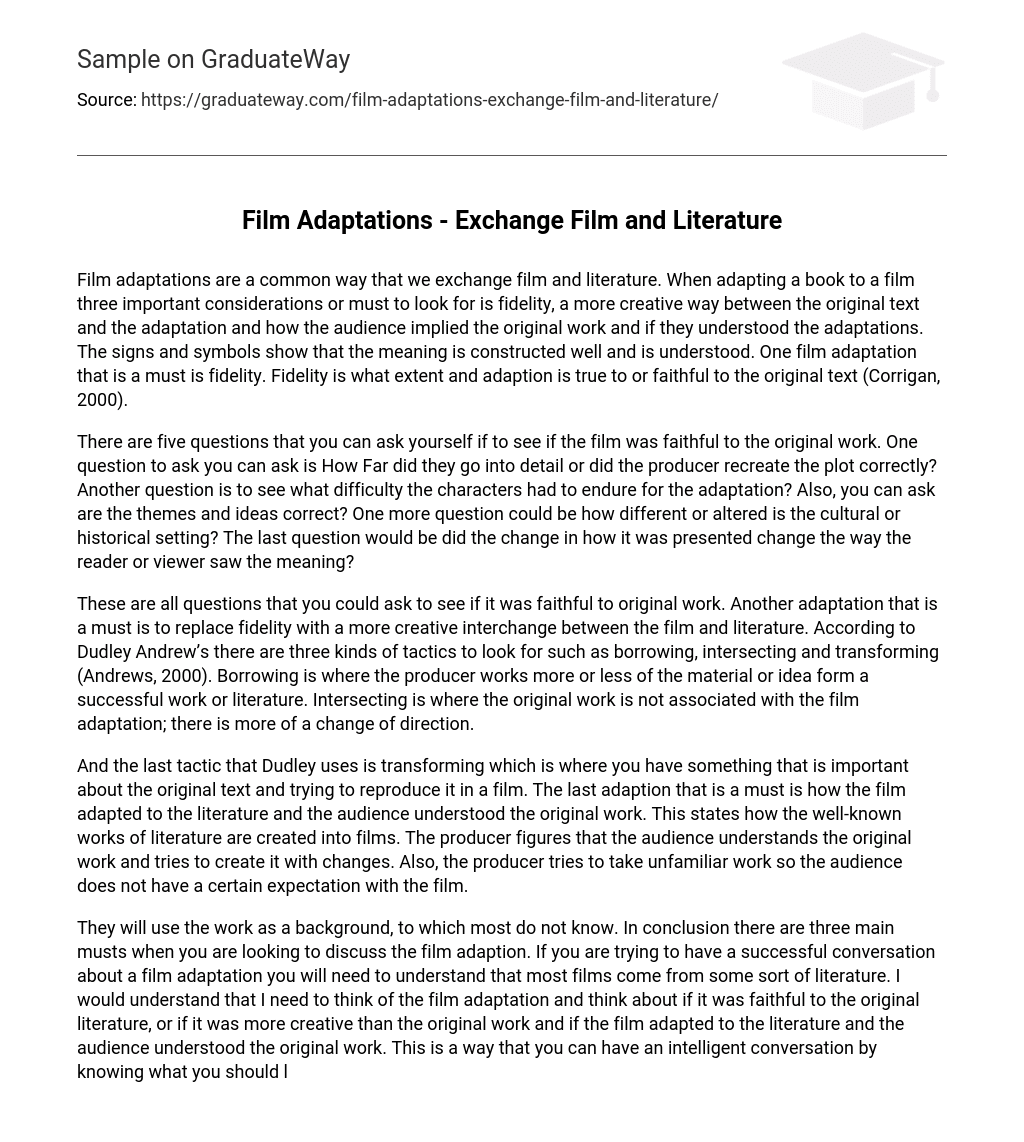Film adaptations are a common way that we exchange film and literature. When adapting a book to a film three important considerations or must to look for is fidelity, a more creative way between the original text and the adaptation and how the audience implied the original work and if they understood the adaptations. The signs and symbols show that the meaning is constructed well and is understood. One film adaptation that is a must is fidelity. Fidelity is what extent and adaption is true to or faithful to the original text (Corrigan, 2000).
There are five questions that you can ask yourself if to see if the film was faithful to the original work. One question to ask you can ask is How Far did they go into detail or did the producer recreate the plot correctly? Another question is to see what difficulty the characters had to endure for the adaptation? Also, you can ask are the themes and ideas correct? One more question could be how different or altered is the cultural or historical setting? The last question would be did the change in how it was presented change the way the reader or viewer saw the meaning?
These are all questions that you could ask to see if it was faithful to original work. Another adaptation that is a must is to replace fidelity with a more creative interchange between the film and literature. According to Dudley Andrew’s there are three kinds of tactics to look for such as borrowing, intersecting and transforming (Andrews, 2000). Borrowing is where the producer works more or less of the material or idea form a successful work or literature. Intersecting is where the original work is not associated with the film adaptation; there is more of a change of direction.
And the last tactic that Dudley uses is transforming which is where you have something that is important about the original text and trying to reproduce it in a film. The last adaption that is a must is how the film adapted to the literature and the audience understood the original work. This states how the well-known works of literature are created into films. The producer figures that the audience understands the original work and tries to create it with changes. Also, the producer tries to take unfamiliar work so the audience does not have a certain expectation with the film.
They will use the work as a background, to which most do not know. In conclusion there are three main musts when you are looking to discuss the film adaption. If you are trying to have a successful conversation about a film adaptation you will need to understand that most films come from some sort of literature. I would understand that I need to think of the film adaptation and think about if it was faithful to the original literature, or if it was more creative than the original work and if the film adapted to the literature and the audience understood the original work. This is a way that you can have an intelligent conversation by knowing what you should look for in a film adaptation.
Bibliography
Andrews, D. (2000). Adapations. In T. Corrigan, Film and Literature: An Introduction and Reader (pp. p-262-271). Upper Saddle River New Jersey: Prentice Hall Inc. Corrigan, T. (2000). Adaptation. In T. Corrigan, Filmand Literature: An Introduction to the Reader (pp. p. 20-21). Upper Saddle River New Jersey: Prentice-Hall Inc.





